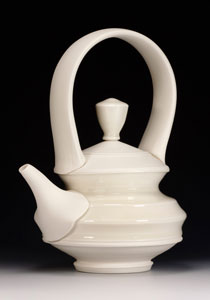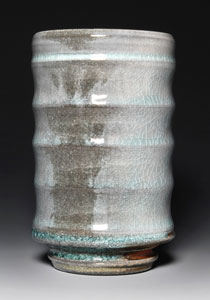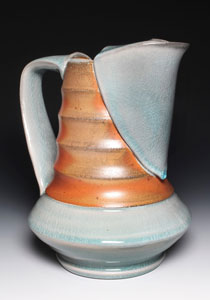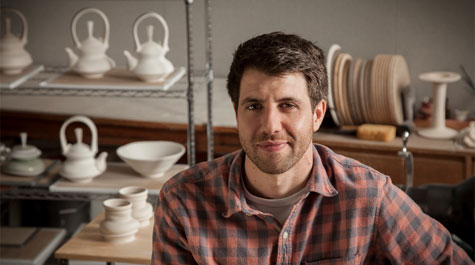Ceramics professor makes objects for ‘moments’
Whether it’s your morning coffee or a special dinner, Mike Jabbur believes there’s a way to elevate the experience.
He does it with clay.
Jabbur, associate professor of ceramics in art and art history at William & Mary, was attracted to the world of the potter by the utilitarian aspect of the objects produced. It’s his reason for honing the craft and teaching it.
“I don’t try to make work that will fill some kind of ambiguous void in somebody’s life,” Jabbur said. “I make what I would want — how I would want to use things — and hope that people connect that way.
make work that will fill some kind of ambiguous void in somebody’s life,” Jabbur said. “I make what I would want — how I would want to use things — and hope that people connect that way.
“So a form that starts specifically for my home, or for my coffee, or whatever hopefully has something universal enough in it that draws other people in.”
He was awarded a Virginia Museum of Fine Arts Professional Fellowship for 2018-19. The award recognizes professional artists who demonstrate exceptional creative ability in their field.
On leave this academic year, Jabbur mostly has worked on new designs and glaze colors in his space in the Matoaka Studio. Teapots, mugs, cups, pots and vases at various stages of firing and glazing dot the room.
Jabbur got interested in pottery while taking a prerequisite course in it during his un dergraduate days at Virginia Tech. He would take items home and start using them right away.
dergraduate days at Virginia Tech. He would take items home and start using them right away.
“The challenge of learning the potter’s wheel and then the idea of making something that would be beautiful or visually interesting in whatever way, that you would also bring into your daily life, that was interesting to me,” he said.
He understands that some owners may opt to look at the precious porcelain more than handle it, and that’s fine, too. But he designs them to be used.
“I make them with function in mind, how they work, how they feel in your hand; I think about that stuff,” Jabbur said.
Creating pottery and teaching it work hand-in-hand for him, he said. He sometimes gets ideas for his own work from the classroom, showing a teapot with a handle on the side that started out as an assignment for his students.
“And vice ver sa,” Jabbur said. “The challenges of making your own work help you remember what it’s like to be challenged as a student. If all you do is go in and teach and then go home, you can lose touch with the practice itself — the craft.
sa,” Jabbur said. “The challenges of making your own work help you remember what it’s like to be challenged as a student. If all you do is go in and teach and then go home, you can lose touch with the practice itself — the craft.
“And if I’m deeply interested in something that’s happening in my work, I might take that idea into a project also.”
He believes that craftspeople are creating items that can be decorative in the home, but become about a particular moment when used. Those can range from a peaceful, solitary moment to a more communal, social occasion.
“I think objects have a history of being important to people in those types of moments, and I think the moments change when we use objects that are not thoughtful, thoughtfully made or designed, frankly ugly in some cases, not always,” Jabbur said. “I love a lot of design objects. But those moments can become throwaway really quickly or they can be things where we kind of reflect and slow down. And I think pots can help with that.”
The vessels can make one more aware of the actual food or drink, or the other people present.
“A pot can kind of say this thing is important — this food or this drink or this moment or whatever is important,” he said. “I think that’s where my interest really comes in.”
















